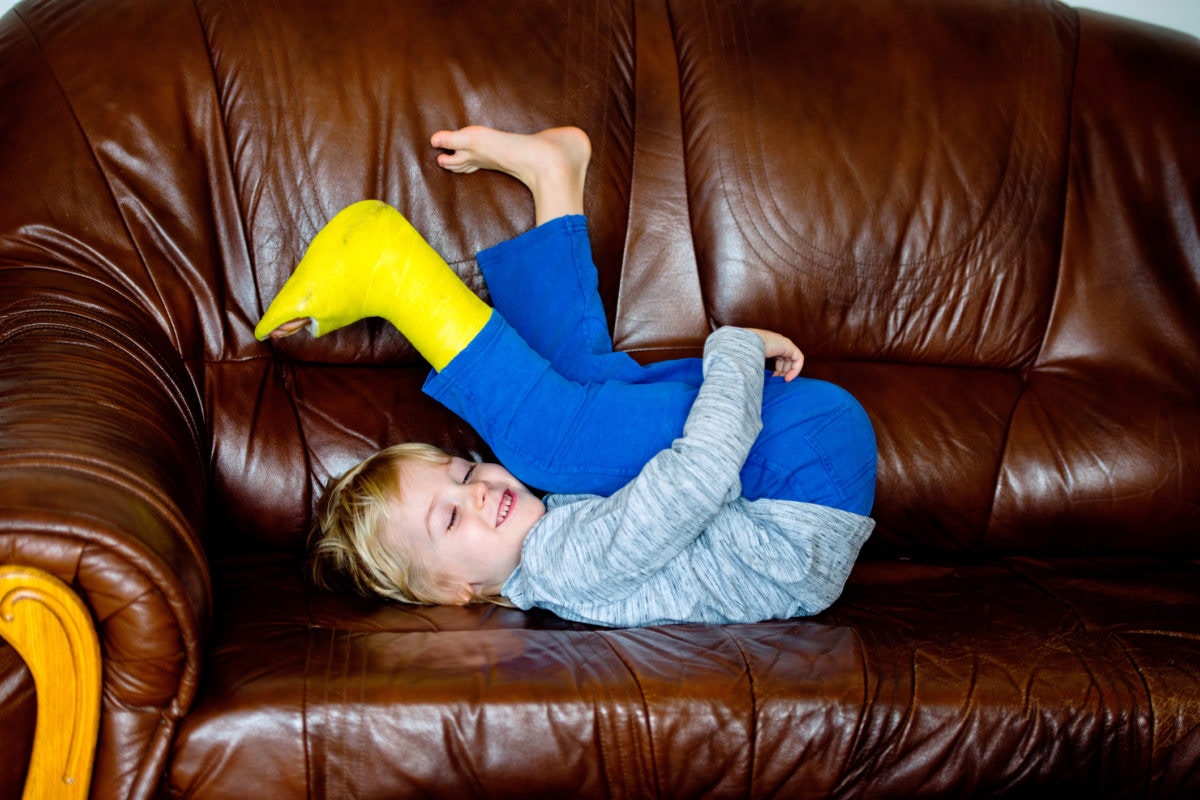Parents of boys, prepare to spend more time in the emergency room. That's the popular wisdom derived from studies like this 2010 report from the Agency for Healthcare Research and Quality (AHRQ), in which boys represented 52.8% of all pediatric ER visits while girls represented 47.2%. Findings like these give weight to sayings like, "boys are walkers, girls are talkers," and, "boys will be boys." We imagine boys to be naturally more active, rambunctious, and fearless than girls. But what if the differences in injury rates are less about the native traits of boys or girls and instead about our collective scientific literacy? There are more boys than girls
Various studies of child injury rates suggest higher injury rates for boys and girls. Take, for example, the above AHRQ report, which estimated that boys make up 52.8% of emergency room visits while girls make up 47.2%. If we assume that the population of boys and girls is equivalent (50-50), then it looks as though boys are significantly more likely to require emergency room services. That only holds true if the populations of boys and girls are equal, which they are not. When interpreting data that shows a difference between boys and girls, it's important to consider the sex ratio, the ratio of infant boy births to infant girl births. In 2015, the sex ratio in the United States was 1.048, which means that for every 100 females born, there were almost 105 males born. The above AHRQ report did consider sex ratio, and included what proportion of the population was male (51.2%) and female (48.8%) at the time of its study. This difference in population narrows the gap in emergency room visits between the two groups, leaving boys with a narrower edge. Many studies, however, do not incorporate the sex ratio, making it easier for casual readers to draw poor conclusions about differences between the sexes.
Various studies of child injury rates suggest higher injury rates for boys and girls. Take, for example, the above AHRQ report, which estimated that boys make up 52.8% of emergency room visits while girls make up 47.2%. If we assume that the population of boys and girls is equivalent (50-50), then it looks as though boys are significantly more likely to require emergency room services. That only holds true if the populations of boys and girls are equal, which they are not. When interpreting data that shows a difference between boys and girls, it's important to consider the sex ratio, the ratio of infant boy births to infant girl births. In 2015, the sex ratio in the United States was 1.048, which means that for every 100 females born, there were almost 105 males born. The above AHRQ report did consider sex ratio, and included what proportion of the population was male (51.2%) and female (48.8%) at the time of its study. This difference in population narrows the gap in emergency room visits between the two groups, leaving boys with a narrower edge. Many studies, however, do not incorporate the sex ratio, making it easier for casual readers to draw poor conclusions about differences between the sexes.
All ages are grouped together
As children age, culture may also have an impact on injury rates. Take, for example, the finding by researchers at a Turkish hospital that boys are more likely to experience severe electrical burns than girls. That difference is mostly accounted for by high-voltage electrical injuries resulting from contact with electrical wires. A common scenario included by that study's authors' is the teenage boy who jumps from a metal balcony onto an electrical pole. The authors conclude that because teenage boys are more likely to take risks such as jumping off of balconies, they are at elevated risk for electrical burn injury. When researchers do not break down "boys" and "girls" into smaller age groups, it's harder to see cultural differences like risk encouragement. In a 2014 study of furniture-tipping injuries and fatalities, the Consumer Product Safety Commission grouped children from ages 0 to 17 in order to compare them to groups of adults and seniors. The study estimated that boys account for 11,700 (54%) of furniture-related injuries during the 2001-2013 period, while girls accounted for 9,900 (46%). The report appears to show that furniture is more dangerous for boys than girls. The report breaks down the ages that are most likely to experience death or injury from furniture, but does not include sex in that breakdown. Without this further breakdown by sex, it's impossible to make strong conclusions about possible differences between boys and girls. Imagine, for example, that boys represented a higher proportion of the injuries for teenagers. From this report, it is impossible to identify a teenager standing on an inappropriately-secured piece of furniture from a curious toddler crawling up it.For many injury types, there are comparatively small samples
An additional problem of studies describing injury rates for boys and girls is their size, Many of the events described in these studies occur so infrequently that there is insufficient data to draw large conclusions. The above CPSC report, for example, indicated that boys were more likely to be killed by a piece of falling furniture than girls, by a ratio of 53:28. Just using those numbers, we could conclude that boys represent 65% of deaths from tipped furniture, while girls represent only 35%. That could lead parents to make lots of assertions about how much more active boys are than girls, or how much more curious boys are than girls, or how much more rebellious they are when told not to jump on the furniture, or even how much more negligent parents are about boys' safety. All of those assumptions, though, would be based on a total of 81 children, a sample that may be too small to draw larger conclusions from, especially when those 81 children are spread out over a 17-year age range.Large studies often rely on population estimates that are unclear to readers
Small studies are problematic because the sample isn't necessarily representative of larger populations, but even comparatively large studies can make it difficult to come to strong conclusions about the sexes. Take, for example, this study of nonfatal pediatric choking, which estimated that boys represent 55.4% (61,942) of all nonfatal choking incidents. Given that boys only represent around 51% of the population, these results appear to show that boys are more likely to choke than girls. Does this mean that they are biologically predisposed to choking? That they are more rambunctious and careless eaters? That their parents are less focused on cutting their food? Or, does it mean that estimates have limitations? The data included in this choking study was drawn from the National Electronic Injury Surveillance System All-Injury Program, which is based on a representative sample of about 100 hospitals. The data from these hospitals was used to make estimates about the larger population. This kind of study is useful in developing a large-scale picture of illness and injury. In this specific case, for example, it was used to identify the kinds of food most commonly choked on (candy). It is common practice for researchers to also include demographic data, as the researchers in this study did with male versus female choking, but the inclusion of such estimates in the results does not mean the authors have made any conclusions about that data. In this case, the authors couldn't make any such conclusions, given the wide confidence interval. A confidence interval is a measure of the repeatability of a study. In the choking study, the authors gave a 95% confidence interval of 46,611 to 77,474. That means that, if this study was repeated 100 times, 95 of those times the number of estimated choking for boys would be between 46,411 and 77,474. If repeated studies fell toward the bottom of that range, boys would number lower than half of the choking cases. As a result, while the authors include the demographic information in their results, they do not draw any conclusions about a child's sex and likelihood of choking.4 tips for better scientific literacy
Studies of injury rates for boys and girls can be helpful in determining biological differences that might require different types of medical care. But those kinds of studies are also often used to ascribe character traits. Boys are more active. Girls are more thoughtful. Boys are fearless. Girls are cautious. When parents internalize these attitudes, our children do too. So when you see that next viral post about a scientific study, practice these four tips to make you a savvier reader:- When you see outcomes grouped in percentages (55% of injuries were boys, for example), ask yourself how each group was represented in the study's original population.
- Regard wide age ranges like "children ages 0-17" with suspicion. Seek out studies that focus on narrower age divisions or those that compare groups by age.
- Note the sample size. A small study isn't, necessarily, a bad one, but probably cannot lead to large generalizations about entire groups of people.
- When reading a study that produced population estimates, be wary of accepting as "fact" any statistics reported with wide confidence intervals. Those intervals suggest that the authors could not draw any definitive conclusions about those parts of the study.


